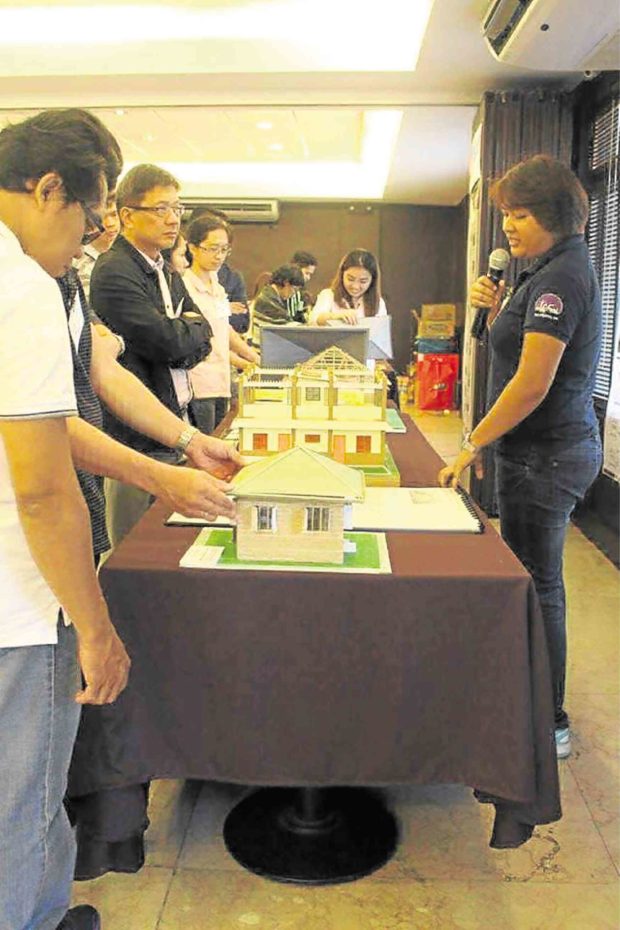Design for the masses

Armed with technical knowledge, communities are enabled to present their ideas to various stakeholders.
More often than not, design and architecture are associated with affluence. Many people think that planning is something that can only be afforded by the privileged few.
Architecture is sometimes treated as an exclusive service, as a way of beautifying things that surely cannot accommodate the poor. If you follow this school of thought, you’ll be surprised to know that the opposite actually holds true with TAO-Pilipinas.
A female-led group of technical professionals, this group makes themselves exclusive to the needs of the marginalized sector. The organization uses planning as a way for the poor to express their needs and aspirations. Taking a course off the beaten path, TAO-Pilipinas helps make architecture for everyone.
Professionals for the poor
The Technical Assistance Organization, or TAO-Pilipinas for short, was born more than 17 years ago. A brainchild of two friends from the University of the Philippines College of Architecture, the group was formed with the goal of bringing technical assistance to the poor.
From the original staff of two architects, TAO-Pilipinas now consists of several architects, engineers and other professionals.
The non-government organization (NGO) facilitates participatory planning in underprivileged communities.
Helping residents organize their ideas and present them before stakeholders, TAO-Pilipinas advocates the use of people’s plan—or a plan that involves its intended residents in the design process.
Since 2001, the group has been involved in the participatory planning of different underprivileged communities in the Philippines. Some examples would be the Barangay Pineda in Pasig, West Rembo in Taguig, and Baseco in Manila.
A new way to fight
Instead of resorting to violence and opposition, the group encourages people to lay out their ideas in drawings, maps, models and artwork.
The architects facilitate the discussion and members of the community are encouraged to contribute and consolidate their ideas to form a concrete plan. Though hesitant at first, many members eventually end up creating something to represent their aspirations, ideas they can explain with pride.
The People’s Plan helps communities make their needs known to the government. Through technical means, the people are enabled to speak the language of the professionals.
As Arch. Arlene Lusterio, one of the founders of TAO Pilipinas, puts it, “The alternative plan coming from the community was a new experience for the government. It was a plan it did not expect, and a plan it received with minimal resistance” (TAO-Pilipinas).
By teaching people to express themselves through technical means, they have been given a clearer voice in negotiating with the government and other stakeholders.
Successful outcomes
Peaceful negotiation between two parties allow common goals to be established and possible solutions to be developed. Through the use of the People’s plan, residents are given a means to communicate effectively with the government.
For its part, the government is able to explain to the people its own capabilities and limitations. Through an objective exchange of ideas, the two parties are able to reach an agreement.
The discussions can result to onsite development or off-city relocation. The results of the exercise are not always what the people envisioned, but they are successful because their needs are made known and strived to be met.
Through peaceful means and technical communication, the process and chosen solution become clear to all parties involved. Whether or not the People’s Plan is fully realized, violence and opposition are avoided because everyone finally understands and takes part in the solution.
Road ahead
Beyond technical empowerment, TAO-Pilipinas works on facing environmental issues and molding the new generation.
The group helps people plan for disaster risk management, climate change, and architectural heritage conservation. It also trains college students, academics, and young professionals in social action regarding issues in human settlement. This is achieved through its Young Professionals Orientation and Training Program and YP Internship program. With education and exposure, other professionals are enabled to help marginalized communities.
With all things considered, do you still think architecture and planning are services for the rich? By spearheading the People’s Plan, TAO-Pilipinas allows building professionals to be of service of the Filipino masses. Through the teaching of technical skills, people are empowered to help themselves and voice out their concerns through peaceful means.
Architecture and planning thus become tools to educate and embolden communities. By going through the road less taken, architects can become agents of social change.
(References: TAO-Pilipinas. Architects in the Margins; Arch. Arlene Lusterio; Theresse Julia; photos from the TAO-Pilipinas Facebook Page)
